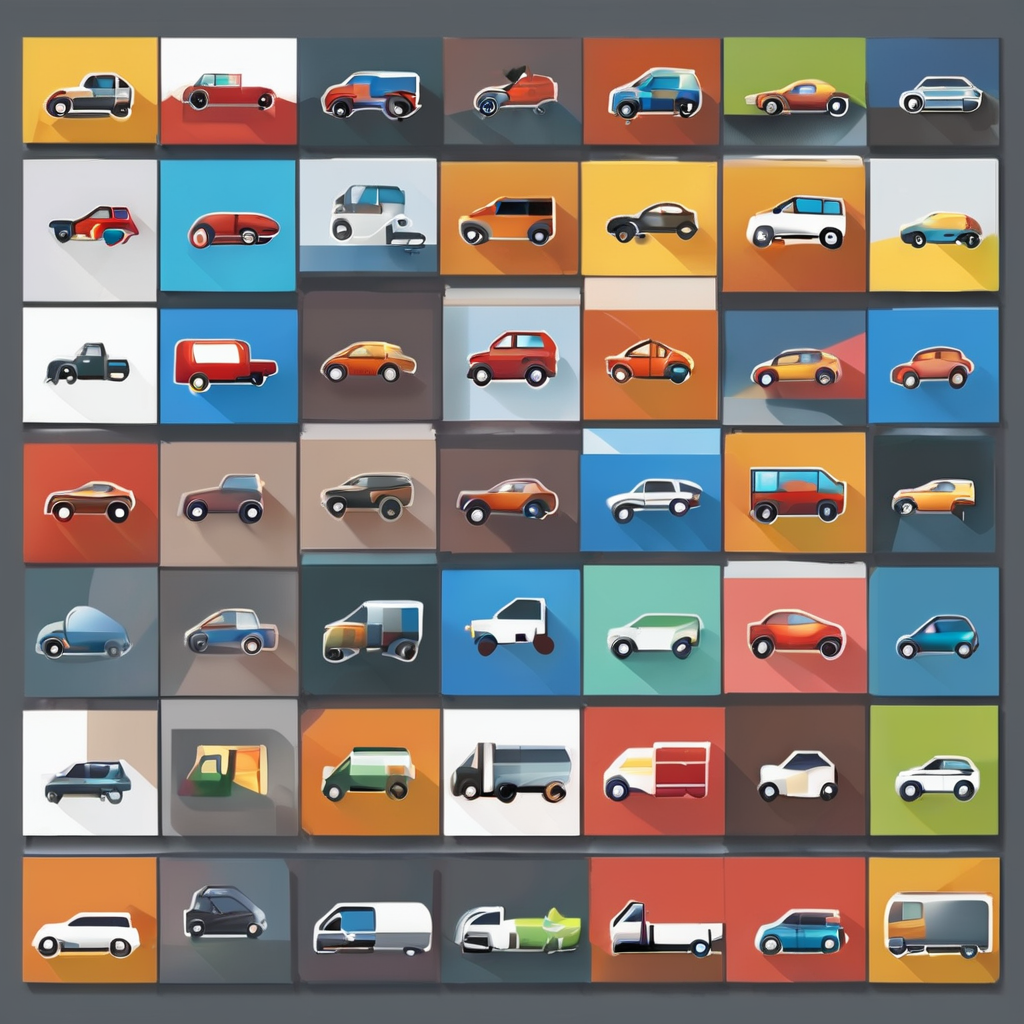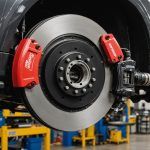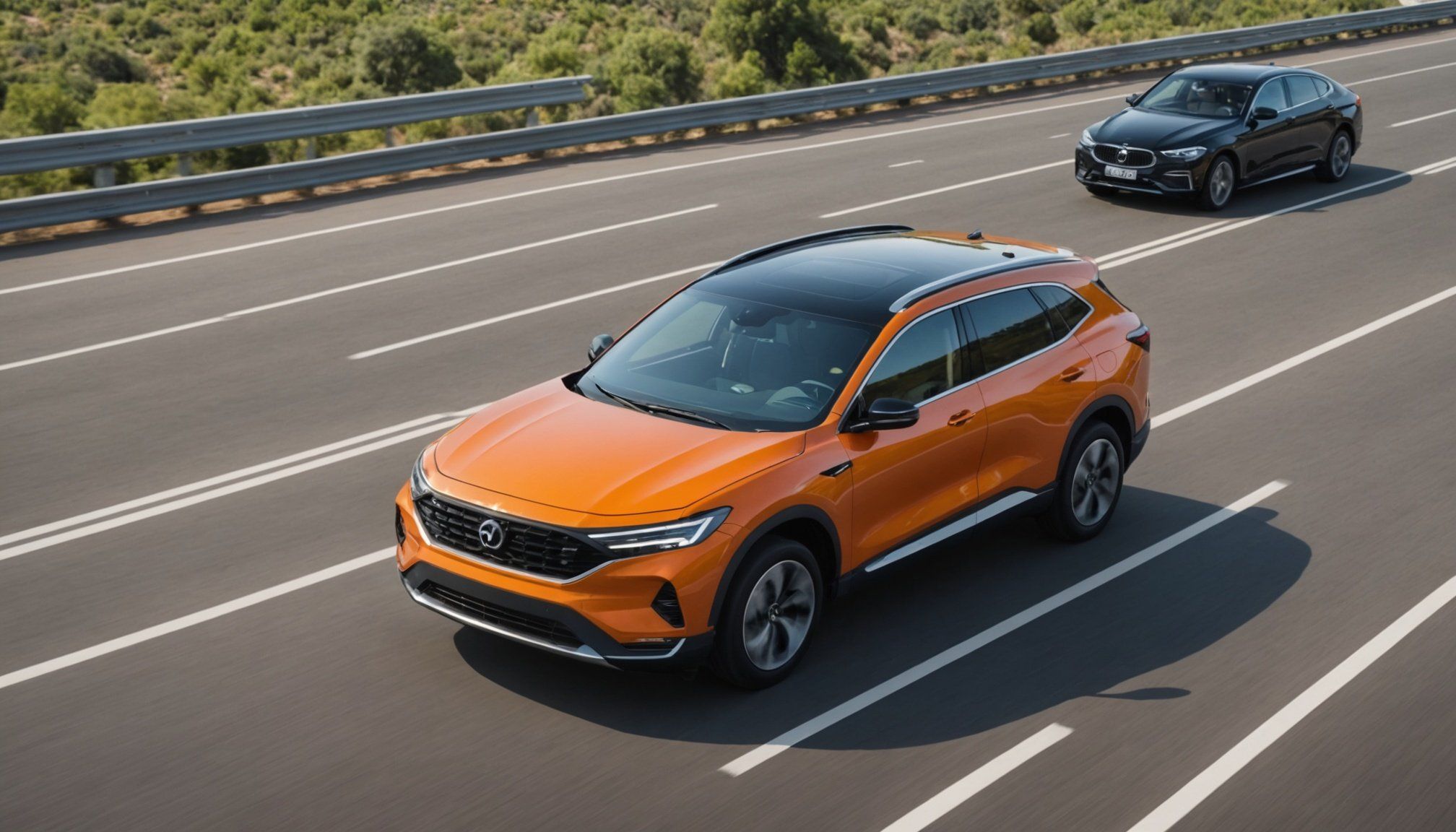Overview of 2024 Vehicle Safety Updates
Understanding upcoming vehicle safety innovations for 2024 is pivotal for consumers focused on automotive safety. The year promises advancements in technology across numerous models, exemplifying the industry’s commitment to enhancing passenger protection. New vehicle safety innovations are set to revolutionise how motorists interact with their cars and the road.
Key updates include sophisticated 2024 car features that integrate evolving automotive safety trends. Consumers should particularly note the increased incorporation of advanced driver assistance systems and stronger crash protection parameters. Enhanced sensors and algorithms will play a significant role in protecting lives. These systems will not only aid drivers but also ensure compliance with heightened safety regulations.
In the same genre : Essential Safety Measures for Testing and Fine-Tuning High-Performance Brake System Alignment
Staying informed about the latest 2024 car features is essential. Car manufacturers are aligning more closely with stringent safety mandates, underscoring the necessity for consumers to demand high standards in safety technologies. By staying abreast, drivers can make informed decisions rooted in the latest data, safeguarding themselves and their passengers.
As safety regulations adapt to meet the challenges posed by new technologies, such as AI and automation, the fundamental role of vehicle safety innovations cannot be overstated. Ensuring public awareness of these changes fosters a safer driving environment for all road users.
Also to see : Essential Tips for Securely Transporting Your Electronic Devices in Vehicles
Key Safety Features to Look for in 2024
Understanding the advanced driver assistance systems set to emerge in 2024 is crucial for informed decision-making. These new car safety technologies encompass enhanced collision avoidance systems, automated emergency braking enhancements, and improved lane-keeping assistance.
Enhanced Collision Avoidance Systems
Pioneering algorithms and refined sensors are integral to 2024’s automotive safety landscape. These improvements significantly bolster detection capabilities, minimizing accidents and increasing driver vigilance. Enhanced detection leads to timely alerts, promoting accident prevention.
Automated Emergency Braking Enhancements
Among the notable 2024 car features, enhancements to system responsiveness and braking power stand out. Updates mean quicker response times and robust braking capabilities that evidence a tangible reduction in collision scenarios. Case studies indicate effective avoidance of previously unavoidable crashes, underscoring the system’s practicality.
Improved Lane Keeping Assistance
Updates in lane departure warning systems elevate driver confidence by providing adaptive, responsive guidance. Enhanced systems assertively prevent lane drift, while user experience data illustrates marked satisfaction and comfort. These features allow for safer journeys, offering corrective assistance in situations where drivers may be temporarily inattentive.
Each element of these safety innovations offers substantial advancements over current models, emphasizing the importance of evaluating and incorporating these technologies into future vehicle purchases.
Leading Brands in Vehicle Safety for 2024
Examining automotive safety leaders is pivotal when considering the safest vehicles for 2024. Manufactures focusing on cutting-edge safety technology, such as advanced driver assistance systems, are leading the charge. Brands prioritizing robust 2024 car features are setting benchmarks through rigorous testing and innovative designs. Key players like Volvo and Mercedes-Benz have consistently ranked high in safety assessments, highlighting their commitment to passenger protection.
Safety testing, conducted by recognized authorities such as the Euro NCAP and the IIHS, provides an essential overview of a vehicle’s safety performance. Safety ratings for 2024 models have shown significant advancements in areas like collision avoidance and braking enhancements. Consumers can trust these evaluations to make informed choices regarding their next vehicle purchase.
The reputation of the safest car brands hinges on their dedication to combining innovation with reliability. By maintaining transparency and adapting to automotive safety trends, these manufacturers build strong consumer trust. With a focus on compliance with evolving vehicle safety standards, these brands ensure that consumers not only feel secure but also experience cutting-edge safety when driving. Thus, identifying and choosing such brands is crucial for those seeking superior safety in their vehicles.
Regulatory Changes Impacting Vehicle Safety
Governments worldwide are introducing automotive safety regulations to keep pace with fast-evolving technologies. These regulatory changes aim to ensure that new vehicles meet stringent safety standards and deliver optimal protection for all road users.
New Legislation Affecting Vehicle Safety
Key laws passed recently focus on areas such as increased crashworthiness, improved emission standards, and advanced surveillance capabilities. Governmental bodies, including the National Highway Traffic Safety Administration (NHTSA) and the European Union’s New Car Assessment Programme (Euro NCAP), play pivotal roles in formulating these regulations. By mandating minimum safety thresholds for technologies like electronic stability control and airbags, these organisations encourage manufacturers to innovate while adhering to strict guidelines.
Compliance Requirements for Manufacturers
Manufacturers face new compliance standards covering production processes, material selections, and vehicle testing protocols. Companies must adapt their developmental cycles to integrate innovations that meet these regulatory demands. Non-compliance can result in hefty penalties, including fines and slow product releases. The industry has largely responded by prioritising safety in R&D, ensuring vehicles not only meet but exceed mandated specifications. This proactive approach also strengthens consumer trust, as compliance signifies a commitment to delivering secure and reliable automotive products.
Consumer Perspectives on Vehicle Safety Features
Understanding consumer safety preferences is essential as buyers increasingly focus on cutting-edge safety technologies. Consumers are demonstrating a strong desire for vehicles equipped with advanced safety features, prompting manufacturers to respond to these preferences. Recent surveys indicate a trend towards prioritising safety over other vehicle attributes like performance or aesthetics.
The demand for buying safety updates is on the rise, with consumers seeking the latest in safety technology. This appetite is driven by heightened awareness of automotive safety and its importance in ensuring passenger protection. As a result, companies that innovate and frequently update these systems tend to capture a higher market share, illustrating the impact of how safety and technology merge in this industry.
Market trends suggest that safety features heavily influence vehicle sales, with brands offering superior safety garnering stronger brand loyalty. Analysing consumer perception helps manufacturers fine-tune their strategies, aligning product offerings to meet customer expectations. Additionally, consumers show increased confidence in brands that consistently improve safety protocols, fostering a sense of trust. Ultimately, staying attuned to these perspectives not only drives sales but also enhances overall customer satisfaction in the automotive industry.
Future Trends in Vehicle Safety Technologies
The sphere of future vehicle safety innovations is rapidly evolving, with breakthroughs transforming the landscape of autonomous vehicle safety. Next-generation safety features are increasingly leveraging sophisticated technologies to ensure elevated safety standards.
Intersection of Artificial Intelligence and Vehicle Safety
Artificial intelligence is poised to significantly influence the trajectory of automotive safety. Predictive analytics and machine learning models are designed to anticipate and prevent potential hazards before they manifest. Autonomous vehicles, deploying AI, promise unprecedented levels of safety. However, ethical concerns arise regarding decision-making in critical situations, where the safety of humans is prioritized. Detailed algorithms and rigorous testing remain vital to address these challenges effectively.
Enhanced Connectivity and its Role in Safety
Connected vehicles highlight the blend of enhanced connectivity and safety, particularly through vehicle-to-everything (V2X) communication. This technology enables vehicles to exchange information with surrounding infrastructure, other vehicles, and even pedestrians, minimizing risks and facilitating safer commutes. Real-time safety alerts harness this connectivity, offering timely interventions in dynamic traffic environments. Benefits include improved traffic flow, reduced collision likelihood, and enhanced emergency response. As these capabilities expand, they underscore the critical role of connectivity in next-generation safety features.











